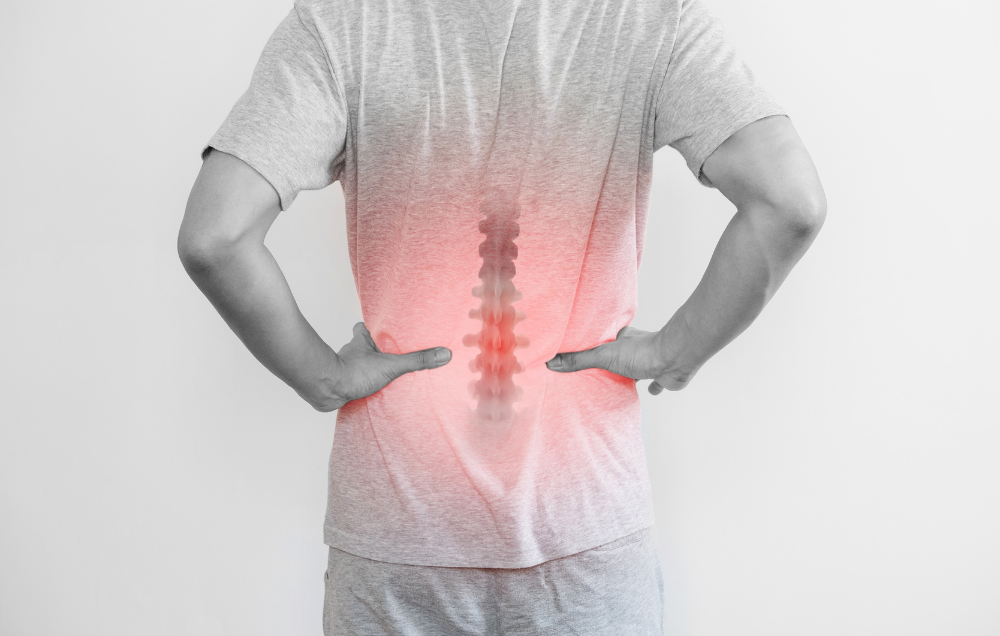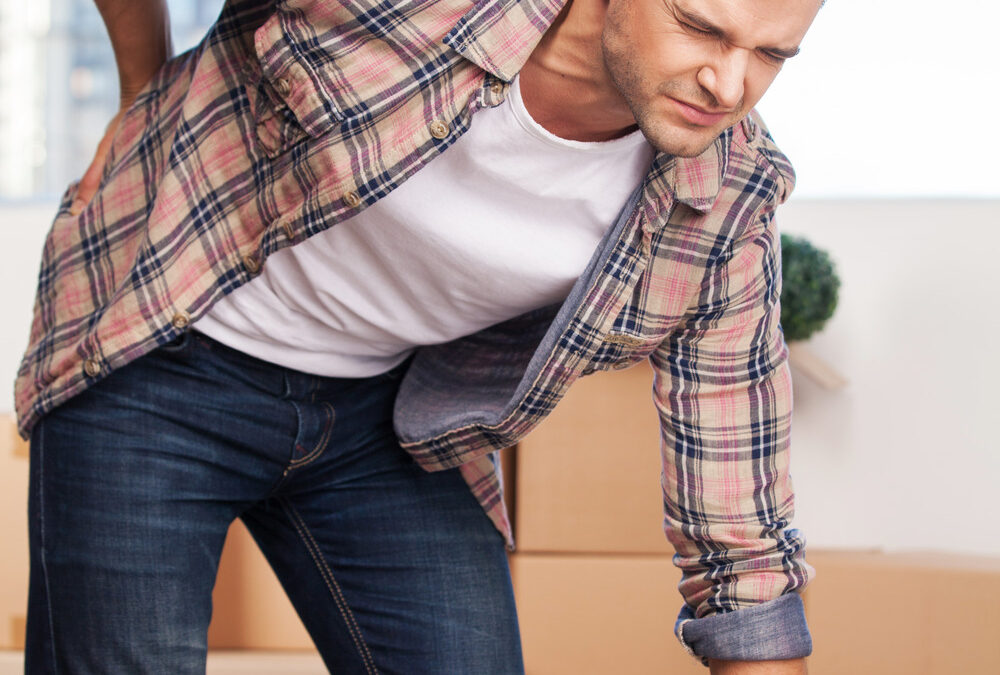Contents
Back pain is a common condition for many people, but it’s even more common for women. While lower back pain is prevalent in about 39% of men, it occurs in over 69% of women. This may be due to estrogen deficiency in older women, which can increase the likelihood of fractures and other bone issues. But what causes lower back pain in women and how can you address your pain?
Causes of lower back pain in women
There are many different reasons that you may be feeling lower back pain, but for women, sometimes the cause of lower back pain is different than for men. Here are some common causes of lower back pain that are exclusive to women:
- Menstrual pain — Dysmenorrhea or menstrual pain often occurs just before or during menstruation. Symptoms include lower abdominal cramps, lower back pain and pelvic discomfort. Headaches and nausea can also coincide with this pain.
- Endometriosis — This is a chronic health condition where tissue that is similar to the uterine lining can grow outside of the uterus, potentially affecting the ovaries, fallopian tubes and other organs. Symptoms of endometriosis can include pelvic pain, lower back pain, painful periods, pain during sexual intercourse and fertility issues.
- Pelvic inflammatory disease — Pelvic inflammatory disease (PID) occurs when reproductive organs get infected. Symptoms include lower abdominal and back pain, fever, atypical vaginal discharge, and irregular menstrual bleeding. Prompt treatment for PID is essential to prevent complications such as infertility or chronic pelvic pain.
- Fibroids — Fibroids are noncancerous growths that can develop in or on the uterus. The larger the growths, the more symptoms they can cause. Fibroid symptoms can include pelvic pain or pressure, heavy menstrual bleeding, frequent urination and lower back pain.
- Pregnancy-related back pain — During pregnancy, a person’s center of gravity can shift, which increases stress on the lower back muscles. This can cause lower back pain due to strain on the muscles. Hormonal changes due to pregnancy can also contribute to symptoms of pain and discomfort.
- Ovarian cysts — Fluid-filled sacs that form on or within the ovaries are called ovarian cysts. While small cysts may not cause any issues, larger cysts can lead to pressure and pain, including in the lower back. Small cysts may resolve on their own, but the rupture of an ovarian cyst can cause severe pain and requires immediate medical attention.
- Adenomyosis — When endometrial tissue grows into the muscle of the uterus, it causes adenomyosis. While this is similar to endometriosis, they are two different conditions. Common symptoms of adenomyosis include menstrual pain, heavy menstrual bleeding, pelvic pain and lower back pain.
While some causes of lower back pain are exclusive to women, there are other possible reasons for that pain. Here are some causes of lower back pain that can affect both men and women but are more prevalent in women:
- Piriformis syndrome — The piriformis muscle is a large muscle located deep in the buttock. Pain that originates from spasms in that muscle can cause piriformis syndrome. Symptoms include chronic pain in the buttock and hip area worsened by hip movements, pain while getting out of bed, an inability to sit for long periods of time, and radiating pain in the back of the thigh and leg.
- Sacroiliac joint dysfunction — Sacroiliac joint dysfunction or sacroiliitis can cause pain in the sacroiliac (SI) joint that connects the bottom of the spine to the pelvis. SI joint problems are a common cause of lower back pain. Symptoms include lower back pain, dull or achy pain directly over the buttock, and sharp, stabbing, or shooting pain down the thigh.
- Spinal osteoarthritis — If the fibrous cartilage in the facet joints breaks down, your bones may rub together, causing pain. Spinal osteoarthritis can cause pain in the upper or lower back, groin, buttocks, and thighs; back stiffness and pain in the morning; occasional flares of severe pain; and pain occurring in one side of the back that increases when applying external pressure.
- Degenerative spondylolisthesis — Degeneration can cause a vertebra in the spine to slip over the vertebra underneath. This is called degenerative spondylolisthesis. Symptoms include lower back pain with radiating pain in the legs and pain while walking.
- Coccydynia (tailbone pain) — Pain in the end of your spine is called coccydynia and occurs largely due to injuries. Symptoms of a tailbone injury include pain while sitting, pain when leaning back while sitting, pain while sitting on hard surfaces, and pain when standing up from a seated position.
- Osteoporosis — Osteoporosis occurs when bone density decreases. This makes the bone brittle, which can cause pain and compression fractures. Symptoms of a spinal fracture include acute, localized back pain that occurs typically in the mid-back or region between the mid- and lower back, and pain that may spread in front and be confused with heart or lung problems.
No matter what is causing your lower back pain, you don’t have to suffer in silence. Treating your lower back pain can reduce pain and help you get back to a more active way of life.
Treatments for lower back pain in women
Some severe cases of lower back pain in women may require surgery or other invasive procedures. However, milder lower back pain can be treated through physical therapy methods such as:
- Joint mobilization.
- Soft tissue manipulation.
- Spinal decompression.
- Therapeutic stretching.
- Trigger point therapy.
Lattimore Physical Therapy is here for you. Your physical therapist may use some or all of these treatments to help you deal with your pain. Together, you and your PT can strengthen the tissue in your lower back to relieve pain and prevent future injuries.
If you’re ready to address your lower back pain, contact our team today for more information or to schedule an initial appointment.



